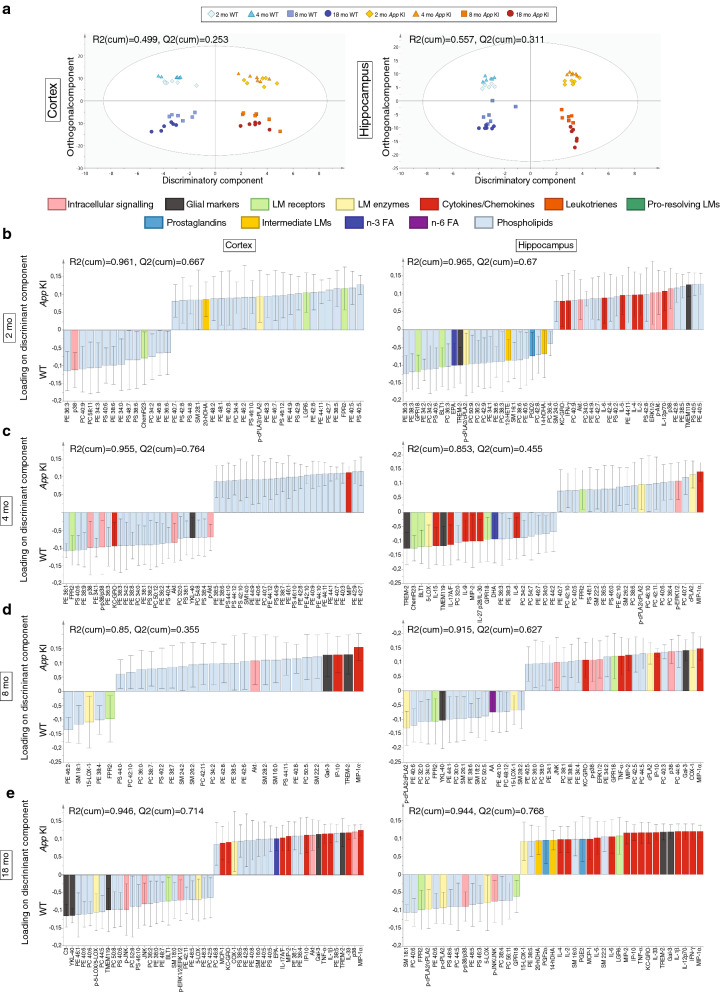Fig. 8.
Multivariate discriminant modelling of protein and lipid mediators, enzymes, receptors and phospholipids in the cortex and hippocampus from WT and App KI mice of different ages. Orthogonal projections to latent structures (OPLS) – discriminant analysis (DA) was used to create models based on all ages (a), as well as of animals at 2 (b), 4 (c), 8 (d), and 18 (E) months of age, respectively. The quality of the models was determined by cross-validation, producing measures of the ability of the models to explain the variability of the data (R2(cum)) and to predict, i.e. discriminate between WT and App KI mice (Q2(cum)), as shown in the corresponding plots. The scatter plots in a show the distribution of animals of all ages along the discriminatory component (X-axis), and the first orthogonal component (Y-axis) for hippocampus and cortex, respectively. In b–e, the loadings on the discriminatory component are shown from the OPLS-DA models based on data from each age and separated according to region. Only factors with a significant impact (with a standard error of the loadings from the cross-validations that does not shift sign, i.e. does not cross the X-axis) are shown and limited to the 25 factors with highest positive and 25 with highest negative loading (higher levels favouring categorization as App KI and WT, respectively), except for models in which 25 factors with significant loading could not be found

